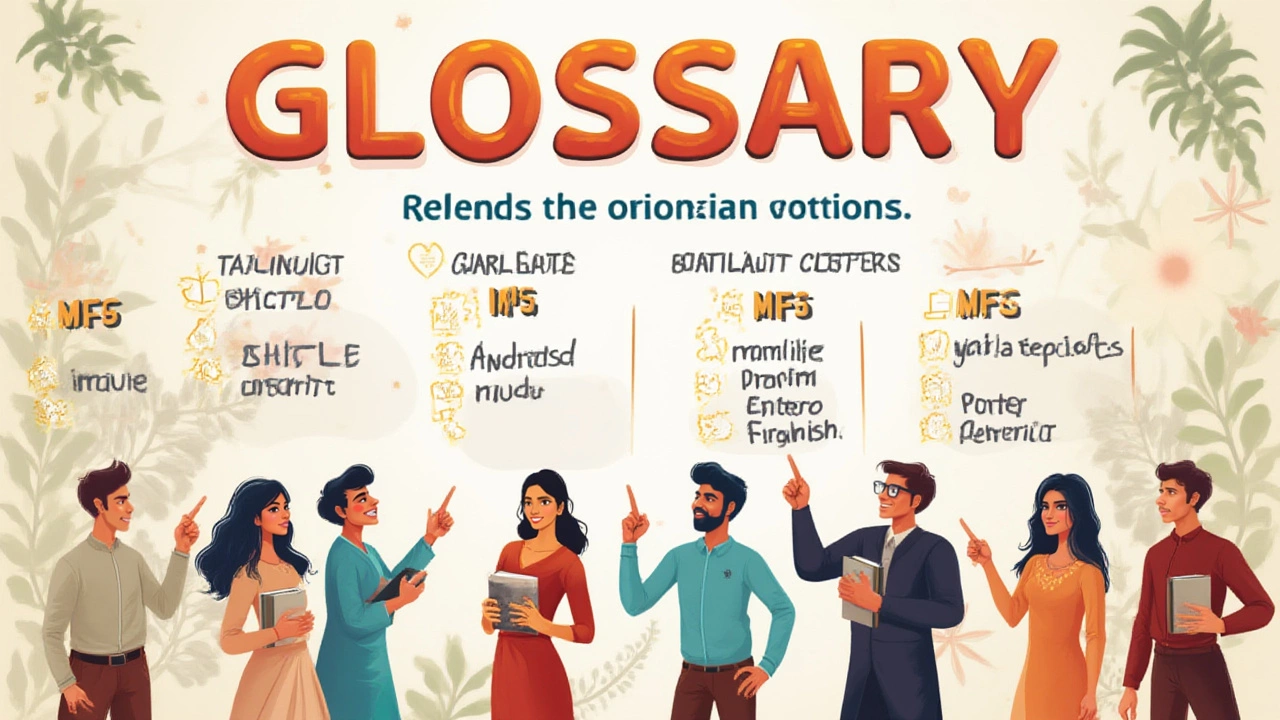
Ever picked up a book or scrolled through a reading app and spotted the random letters “MF” hanging out in the description? It’s almost like those three letters are winking at you, daring you to figure them out. No, it’s not some weird secret code or the initials of a mysterious author. In reality, those little letters pack a ton of meaning, especially if you’re a fan of romance novels. But what’s the deal? Why do they matter so much? Sit tight, because we’re about to crack the code for you—no detective’s license required.
Understanding MF: What Does It Actually Stand For?
Okay, here’s the deal: In the world of books—especially in romance—“MF” stands for “Male/Female.” It’s the industry’s way of telling you that the main romantic relationship in this story is between a man and a woman. Sounds simple, right? You might see it in book blurbs, online bookstore listings, or right on the cover. It’s a quick label, just three characters, that gives you an instant idea of what kind of relationship to expect in the plot.
This labeling isn’t just for show. The romance genre is massive—think about all those shelves packed with titles at your local bookstore or the seemingly endless scroll on online reading apps. Readers want to know what they’re getting. Is the main couple a guy and a girl (MF), a woman and another woman (FF), maybe two guys (MM), or something else entirely? Short acronyms like MF save space and tell you what you want to know without spoiling any plot twists.
MF is probably the most common label in romance, but it’s especially used when readers are specifically hunting for or avoiding certain types of pairings. Lots of readers are looking for stories that match their preferences or comfort zones. Some folks love seeing representation of all sorts of relationships; others just have a soft spot for specific pairings. Either way, that label can make or break a sale.
Why Are Genre Acronyms Like MF Used In Books?
Book shopping, both online and in stores, is a wild place. There are millions of titles competing for your attention. Genre acronyms like MF make the whole process so much easier, especially when it comes to browsing. Think of them like shortcuts that help you zero-in—fast—on stories with themes and character dynamics you love (or want to avoid).
Publishers and authors use these codes to set expectations. If someone picks up a book marked MF, they know the romantic core is a male/female pairing. That avoids those awkward moments where you’re halfway through a story only to realize it’s not for you. In many ways, acronyms like this help build trust between readers, writers, and publishers. After all, nobody wants to waste time on a story they won’t enjoy.
It goes even deeper in the era of digital self-publishing. Tons of indie authors release books directly to Amazon, Kobo, Apple Books, and other online platforms, and being clear about what’s inside—without writing a huge essay—makes all the difference. Some readers want explicit pairings, while others are searching for sweetness, drama, slow-burns, or spicy tales. Frequency of use for "MF" and similar terms has skyrocketed since 2010, according to Goodreads search statistics, especially as readers get more involved in online book communities.

Common Genre Acronyms You’ll See Alongside MF
The book world doesn’t stop at MF. Here are some of the abbreviations you’ll spot, especially if you’re into romance or LGBTQ+ fiction:
- MM: Male/Male (romance between two men)
- FF: Female/Female (romance between two women)
- MMM, FFF, MMF, FFM: More than two main characters, with gender dynamics clearly spelled out (e.g., MMF means two men, one woman in a romance)
- RH: Reverse Harem (one main character, usually a woman, with several male love interests)
- HEA: Happily Ever After (the story ends with a positive outcome for the main couple or group)
- HFN: Happy For Now (the ending is positive, but not permanent)
These are just a few of the most common ones, but the list goes on. When online book clubs or social media groups chat about new releases, these terms are tossed around all the time. If you’re looking for a book recommendation, using these acronyms in your request gets you much better suggestions, too.
Some book retailers and digital libraries even let you filter by these codes. Say you’re browsing on Smashwords or Kindle, you can literally click a filter for MF or FF. That’s incredibly useful, because nobody wants to scroll for hours hunting down a particular dynamic—time is better spent actually reading. Data from 2023 showed that searches for "book MF meaning" shot up by more than 120%, which just proves how many new readers want to get in the know.
Do All Romance Novels Use the MF Label?
Nope, not all of them. In fact, in traditional publishing, the default assumption is often that a romance is MF unless the cover or blurb specifically says otherwise. So you might not see it on the cover of a mainstream paperback you’d buy at the airport or a big box store. That’s because publishers back in the day figured everyone just assumed the love story would be between a man and a woman.
But these days, authors and publishers are way more upfront. With the booming indie market, more detailed labels are everywhere. Self-published books, web novels, and fan fiction are especially big on using MF and similar acronyms right in the description, tags, or even in the book’s subtitle. Online platforms like Wattpad and AO3 (Archive of Our Own) popularized tagging main character pairings, and now it’s everywhere.
If you pick up a classic like “Pride and Prejudice,” nobody’s going to slap an “MF” on the cover. But if you’re scrolling through Kindle Unlimited, browsing BookTok recommendations, or hunting down spicy indie romance, you’ll almost always see MF or some other tag. Marketing departments know today’s readers want details, and the internet made it really easy to include those in a snap. Anyone who’s ever spent an hour sifting through search results, trying to find a specific trope or dynamic, feels me on this.
So, if you don’t see MF, it probably means the publisher thinks it’s obvious based on the book’s era, genre, or packaging, or that the story isn’t focused on romance. For example, a detective thriller probably won’t use MF, even if there’s a straight romance subplot. But in romance-heavy categories, especially in online spaces, MF is the standard, just to make things crystal clear.

Tips for Readers: Using MF and Other Genre Acronyms To Find Your Next Read
All right, let’s say you’re now a pro at spotting MF on book listings—how can you use this knowledge? First, filter your TBR (that’s “to be read,” in bookworm lingo). When you’re searching for new books, use MF and similar tags to get instant results matching your taste. Online bookstores, author websites, and apps like StoryGraph let you search by keywords and genres, so plugging in “MF romantic suspense” or “MM shifter paranormal” gets you exactly what you want.
Next, flip the script and use the acronyms in reviews. If you fall in love with a new MF romance, adding that tag to your Goodreads or Amazon review helps other readers find the perfect fit. The community vibe is huge—you’re not just hunting for yourself, but helping everyone else in the tribe, too.
If you’re curious about how the acronyms break down by popularity or category, check out this quick stat table:
| Acronym | Typical Genre | Frequency (2024 Goodreads Listings) |
|---|---|---|
| MF | Romance, Romantic Suspense, Paranormal | 56% (of all romance genres) |
| MM | LGBTQ+, Romance | 22% |
| FF | LGBTQ+, Romance | 9% |
| RH | Reverse Harem, Fantasy, Paranormal | 5% |
| Other | MMF, FFM, Polyamory, etc. | 8% |
And here’s a personal tip from me: If you ever share your Kindle account with your spouse—like I do with Anita—check those labels before downloading new books. I once downloaded something for a family road trip that turned out to be much spicier than I’d planned. MF, MM, FF…those little acronyms save your blushes and keep your booklife drama-free.
Finally, don’t be shy about reaching out in online book communities. If you aren’t sure what an acronym means, someone in the group will fill you in fast. Facebook groups, BookTok, and Discord servers have seen a surge in readers swapping recommendations based on these codes. Use them, teach them to your friends, and watch your reading life get a heck of a lot simpler.


